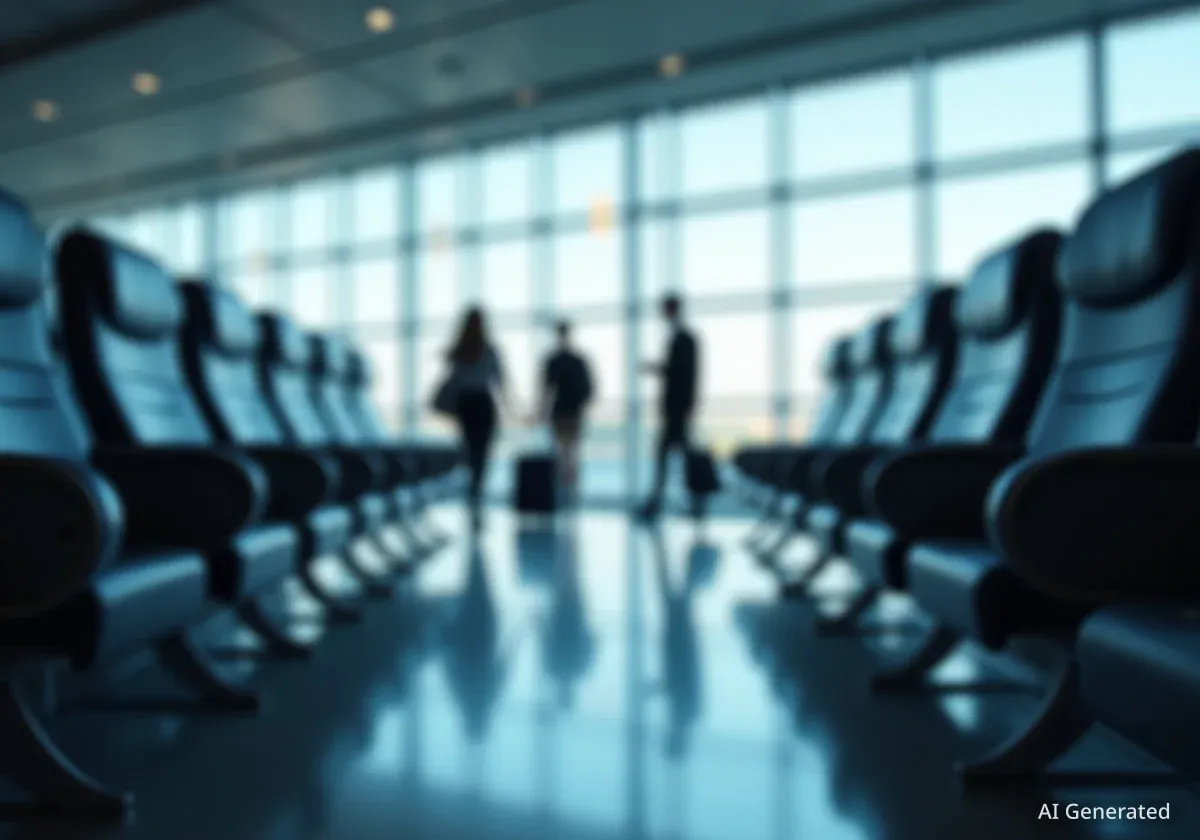American Airlines is embarking on a significant transformation to recapture its standing in the competitive luxury travel market. The carrier, which recently began serving Champagne Bollinger in its premium cabins, faces a critical period to demonstrate a meaningful turnaround after falling behind rivals Delta Air Lines and United Airlines in profitability and customer satisfaction.
Despite operating more flights than any other airline, American recorded only $12 million in profit during the first nine months of this year. This figure represents a mere 2% of the combined profits generated by the three largest U.S. carriers, highlighting the urgent need for strategic shifts.
Key Takeaways
- American Airlines is implementing a comprehensive strategy to improve customer experience and financial performance.
- The airline recorded $12 million in profit for the first nine months of the year, significantly less than rivals.
- New initiatives include premium cabin refurbishments, enhanced digital tools, and a focus on paid upgrades.
- Capital spending is projected to increase to $4.5 billion next year as part of the turnaround effort.
Rebuilding Customer Trust and Profitability
American Airlines is working to address several challenges, including a recent dip in customer satisfaction and a failed business-travel sales strategy. The airline ranked last in J.D. Power’s North American airline customer satisfaction survey this year. It also placed ninth out of ten airlines for on-time arrivals in the first half of the year, according to the Department of Transportation.
CEO Robert Isom is leading the charge to rally American’s more than 130,000 employees. The goal is to regain trust from both customers and investors. American’s stock has seen a 20% decline this year, contrasting with gains by Delta and United. However, a recent fourth-quarter profit forecast exceeded Wall Street expectations, causing shares to rise over 16% in a week.
“You’re going to have a three-month period where you have to be crystal clear on your story,” said Melius Research airline analyst Conor Cunningham, emphasizing the need for clear communication from airline leaders.
Profit Disparity
- Delta Air Lines: $3.8 billion profit (first nine months)
- United Airlines: $2.3 billion profit (first nine months)
- American Airlines: $12 million profit (first nine months)
Strategic Investments in Experience and Technology
Heather Garboden, American’s chief customer officer, is overseeing a major revamp of the airline. She believes customer experience is now a key differentiator, a shift from the past focus solely on price and schedule.
American lagged in retailing fares and adopting technology compared to its larger U.S. competitors. Delta, for instance, recognized early on that customers would pay more for premium seats, which were once often given away as free upgrades. American is now actively seeking ways to sell these seats and ensure its planes have enough premium cabin inventory.
The airline’s merger with US Airways in 2013, the last of the big three to complete a mega-merger, meant it had a delayed start compared to Delta and United in integrating operations and enhancing products.
Merger Impact
American’s 2013 merger with US Airways gave rivals Delta and United a significant head start in integrating their systems and improving passenger offerings, contributing to American's current challenges.
Enhancing the Premium Experience
American expects its capital spending to reach $3.8 billion this year, increasing to approximately $4.5 billion next year. This investment includes new aircraft and a significant refresh of premium cabins. The airline plans to refurbish its Boeing 777-200 aircraft with a new business class, building on a three-year-old upgrade for its larger Boeing 777-300 jets.
The new premium suites, featuring sliding doors, larger screens, and a sophisticated color palette of dark browns, navy blue, and tan, began flying this year on some Boeing 787 Dreamliners. These changes aim to provide a more luxurious and private experience for high-paying travelers.
A new Airbus A321 XLR, a long-range narrow-body plane, recently arrived at Dallas Fort Worth International Airport. This aircraft will initially serve domestic routes and eventually extend to Europe. It will feature a larger business class instead of a first-class cabin.
Technology and Digital Innovations
American is also rethinking its technology strategy. Nearly a decade ago, management decided to remove seat-back screens, believing customers would use personal devices. Now, there is a reevaluation of this decision. United, conversely, is adding thousands of screens to its narrow-body planes, including Bluetooth connectivity.
Garboden hinted at potential changes regarding in-flight entertainment. “I think of where the technology was a decade ago, and where it can be today, or even a few years from today,” she noted. This suggests a renewed focus on modern in-flight amenities.
Digital enhancements are also underway. American is improving its website and app. New features will allow customers to easily switch between paying for tickets with cash or miles. The airline also aims to use artificial intelligence to enable theme-based vacation searches, such as finding the “best wine tasting in spring,” moving beyond traditional city-to-city flight searches.
Debt Reduction Goal
American Airlines plans to reduce its nearly $37 billion total debt by at least $2 billion before 2028.
Operational Reliability and Loyalty Programs
To improve reliability, American announced new measures this year, including adding five minutes to boarding times. An American spokeswoman confirmed this helps reduce bottlenecks and last-minute gate-checked bags, which have decreased by 25% since May 1.
Loyalty programs remain vital for airlines. American was a pioneer, launching AAdvantage as the first frequent flyer program. These programs generate significant revenue by selling miles to banks. The airline recently signed a new credit card deal with Citi and introduced a new mid-tier card with a $350 annual fee.
A federal judge blocked American’s regional tie-up with JetBlue Airways in 2023. This left American without a partner in key markets like Boston and New York, where United and Delta have strengthened their presence. United recently forged a partnership with JetBlue, allowing customers to earn and redeem miles on each other’s flights.
“American hasn’t been paying attention to the customer for the longest time,” stated Henry Harteveldt, founder of Atmosphere Research Group. “I believe there is the beginning of a meaningful turnaround … but a large airline like American is not going to be turned around overnight.”
Looking Ahead: Competitive Landscape
American dominates its hubs in Dallas and Charlotte, profitable operations. However, it has lost ground in the Northeast. Rivals like United and Delta have focused on coastal hubs with affluent travelers, though United has also expanded in markets like Denver, Houston, and Chicago.
United’s CEO, Scott Kirby, recently stated his airline is investing over $1 billion annually in customer experience improvements. United has also rolled out free Wi-Fi via SpaceX’s Starlink. American plans to introduce complimentary Wi-Fi next year for most of its fleet.
Despite these challenges, some customers remain loyal due to American’s extensive flight frequencies. Todd Bryan, 41, an Executive Platinum member, chooses American because it offers the most flights from his home in Fayetteville, Arkansas. He notes American has become more aggressive with offering paid upgrades, even for top-tier members.
The airline recently named Nat Pieper as its chief commercial officer. Pieper, a nearly three-decade airline veteran, previously worked at Alaska Airlines and Delta. CEO Robert Isom described him as “exactly the kind of leader we want at American,” signaling a strategic shift after the previous CCO was fired due to a problematic business-travel strategy.
American’s updates extend to onboard beverages. The airline recently partnered with Italy’s Lavazza for coffee service. To ensure quality, American brought airplane water to its Fort Worth headquarters for taste testing, confirming Lavazza made the cut for onboard brews.





